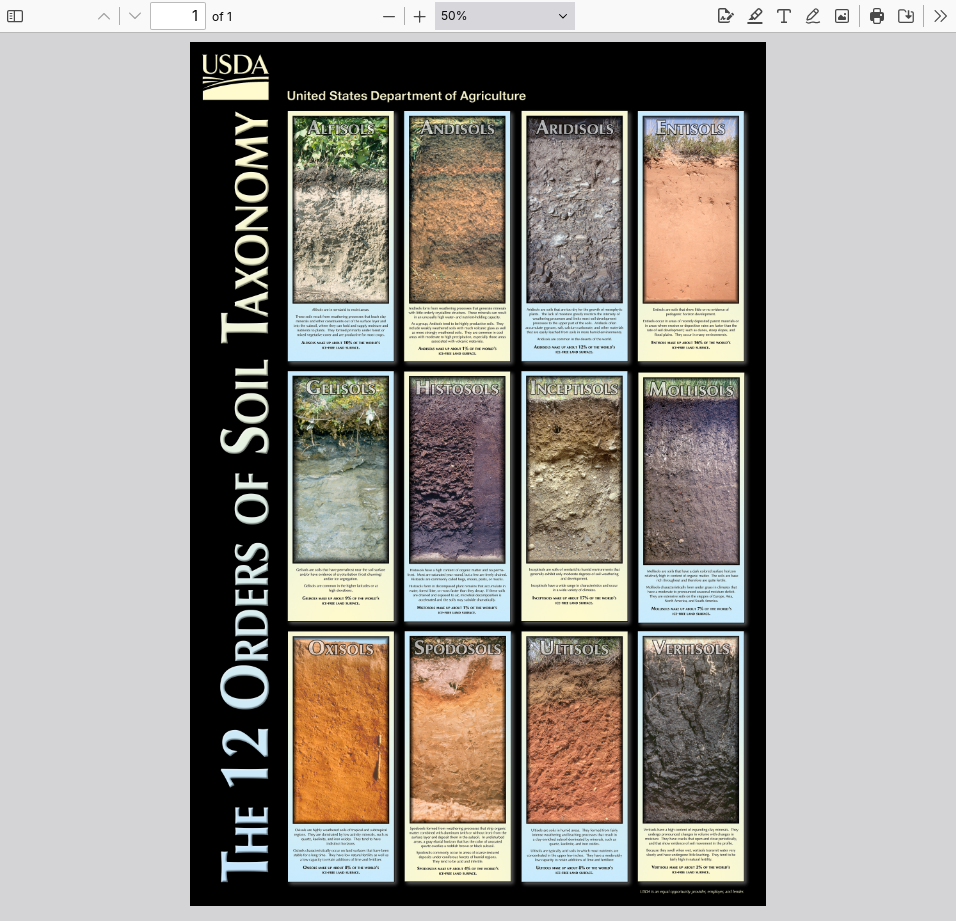Soil Series
When does a system of classification limit the imagination, and when is it liberating? Today in the course of reading about something else I stumbled upon the USDA classification system for soils, helpfully illustrated in a great poster:

As it turns out, the US Department of Agriculture maintains an entire taxonomy of soil types, not unlike the Linnean hierarchy for life. The soil version includes orders, groups, families, and finally the series. At the lowest level there are many, many series–perhaps not as many as there are living species, but still, for the majority of the population that has moved away from agricultural occupations, a staggering number of soils. From Wikipedia:
About 4,500 soil families are recognised in the United States…A family may contain several soil series which describe the physical location using the name of a prominent physical feature such as a river or town near where the soil sample was taken. An example would be Merrimac for the Merrimack River in New Hampshire. More than 14,000 soil series are recognised in the United States. This permits very specific descriptions of soils.
Take a look at the start to USDA’s description of the “San Joaquin” series:
The San Joaquin series consists of moderately deep to a duripan, well and moderately well drained soils that formed in alluvium derived from mixed but dominantly granitic rock sources. They are on undulating low terraces with slopes of 0 to 9 percent. The mean annual precipitation is about 15 inches and the mean annual temperature is about 61 degrees F.
TAXONOMIC CLASS: Fine, mixed, active, thermic Abruptic Durixeralfs
TYPICAL PEDON: San Joaquin loam - on east facing complex slope of 1 percent in a vineyard at elevation of 40 feet. (Colors are for dry soil unless otherwise stated. When described on May 3, 1983, the soil was moist throughout).
I knew little about this catalog before I chanced upon it, and why would I? But it made me happy to know that such a classification system existed. First, to know that some human beings had, at a point in time, been given the chance to study the particulars of our world with such careful attention. Maybe, too, it’s a bit of anticipatory nostalgia for these traditional hierarchical classification systems. As detailed as they are, they are built on simple structuring principles that make them conceptually approachable for people–and quite unlike the inscrutable ordering systems of computers and AI.
Finally, there is something literary and fanciful about an empirical ordering scheme for phenomena that is so detailed that it “goes down” to the level of soil that could only exist in a single patch of continuous ground and nowhere else. All ordering schemes–even those for animal species–are simplifications of endless difference between particulars. But the more of that difference a scheme takes on, the rarer and more special it is. It is an empowering thought, to be shown that even the ground we walk on expresses nature’s power to multiply new one-of-a-kinds.